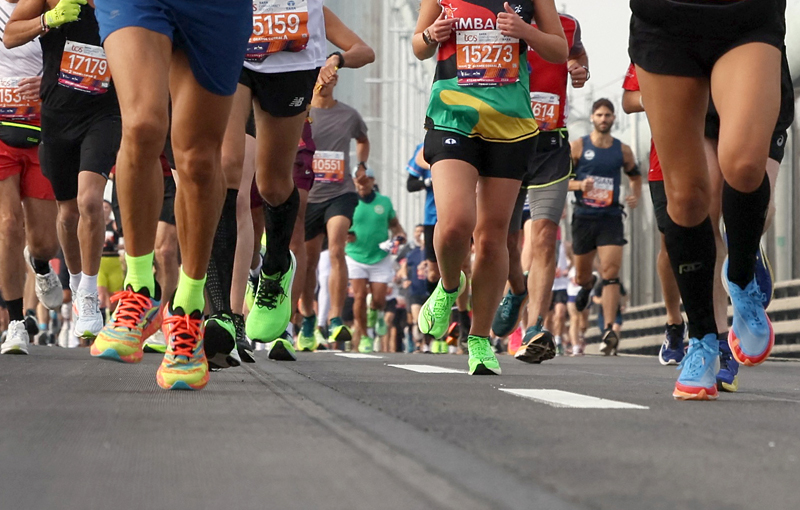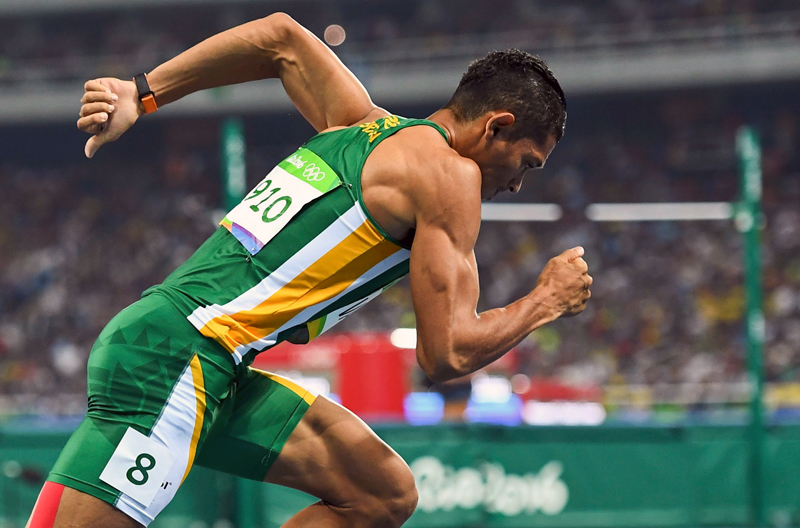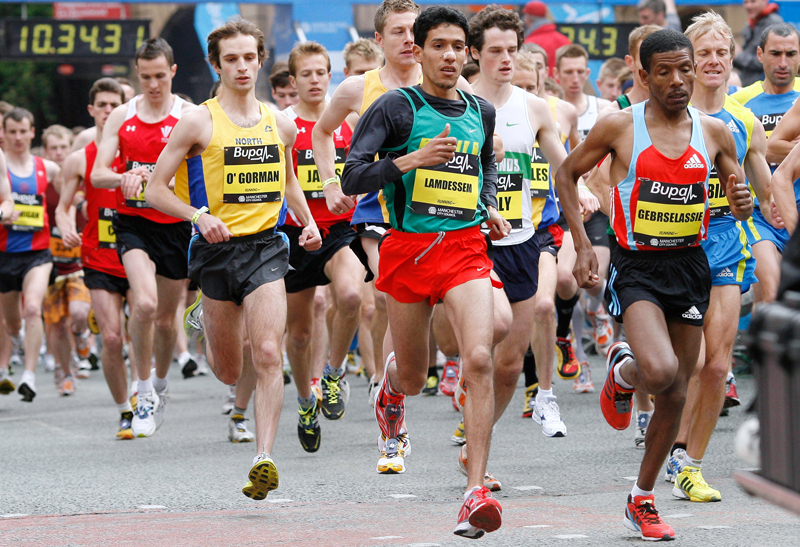Circuits are not traditionally associated with the development of speed or skill. They tend to be viewed as ways to develop strength endurance and foundation fitness, upon which more specific sports fitness can be built as the playing/competition season approaches. However, this need not be the case, as circuits can play a vital role in-season, in terms of developing speed and skill and maintaining base fitness levels.
Using circuits to build specific sport speed, skill and endurance
The key training variable that needs attention when it comes to using a circuit to develop speed is quality. Invariably for a circuit this will boil down to the recovery between exercises and the number of reps/time on each exercise employed. Speed obviously requires fast movements to be executed, whether this is in the form of tennis strokes or the number of strides covered in a 100m race. Coach/athlete will need to carefully consider the key speed aspects of their sport in consequence and select appropriate exercises. To illustrate this, an example of a sprint specific circuit that could be used in the pre-competition training phase – from about this time of the year to May. You can see the circuit in action by clicking on the link at the end of the article.Sprint-specific speed circuit
Exercises
- Sprint arm action from lunge position
Rationale: Driving the arms powerfully and at speed contributes to leg speed –this exercise will condition relevant shoulder power.
Key technique tip: Focus on driving the elbows back, while keeping the shoulders down. - Leg cycling
Rationale: Sprinting requires quick transitions from one stride to the next. Key to this is the folding up of the ‘free leg’ as it leaves the track surface and the heel travels a curvilinear path up towards the butt and is pulled through from the hip into the next stride. This exercise will pattern in this action. It will also specifically strengthen the hamstring muscles to withstand the forces involved in sprinting.
Key technique tip: Keep upright and try not to ‘pike’ at your middle. Cycle your heel up towards your butt and pull it through from your hips. - Alternate knee to elbow crunch (‘chinnies’)
Rationale: Develops the ability of the core (abs and back) to withstand the torque it is subject to when sprinting. This will ensure that the power output of your limbs is channelled where you want it – through the track – and is not dissipated through unnecessary core twisting.
Key technique tip: Keep your elbows out to the side of your head and don’t hold it. - Single-leg speed hops on spot
Rationale: Sprinting requires quick ground reactions – a top-class sprinter’s foot may only be in contact with the ground for 0.9 sec. Performing this exercise will help condition this reaction.
Key technique tip: Land light on your foot and don’t hop too high. The emphasis is on speed and ground reaction. - Seated sprint arm action
Rationale: As for 1. The main difference will be the forces that the core is subject to. The seated position provides a less stable base, which will generate greater potential torque through the trunk. This will require increased specific strength to withstand this rotation.
Key technique tip: As for 1. - Leg drives
Rationale: In order to accelerate the body from a stationary start, the legs must push forcibly back against the track. Much of this power will come from the hip-flexors (the muscles at the top, front of your thighs). This drill will contribute towards developing the necessary leg drive.
Key technique tip: Maintain a straight line through your body. Drive the foot down towards the floor. -
Rationale: This ‘held’ exercise is included to add recovery to the circuit and also to increase core conditioning.
Key technique tip: Remain relaxed throughout the hold. - Medicine ball chest pass against wall
Rationale: Arm speed and power is crucial to optimum sprinting, this exercise will develop plyometric (quick muscle reaction) power in the shoulders and chest.
Key technique tip: Stand close to the wall and ‘move’ the ball as fast as possible through the catch, throw and release cycle.
The sprint-specific circuit, number of repetitions, circuits and recoveries
Key to this circuit is the completion of the exercises as fast as possible without significant speed tail-off. Depending on the athlete’s prior level of conditioning and fitness, greater or fewer quality reps will be possible. As with all circuits, the athlete should start with a manageable amount and then gradually increase the number of reps or the time spent on each station. I have provided a sample progression.Sample progression for a mature sprinter: (1–2 sessions a week)
| Exercise/Week | 1 | 2 | 3 | 4 | 5 | 6 | 7 | 8 |
| Sprint arm-lunge | 2 x 10sec. | 2 x 12sec. | 2 x 15sec. | 3 x 12sec. | 3 x 14sec. | 3 x 16sec. | 3 x 18sec. | 4 x 10sec. |
| Leg cycling | 2 x 15s left and right | 2 x 18s | 2 x 20s | 3 x 15s | 3 x 18s | 3 x 20s | 3 x 20s | 4 x 12s |
| Chinnies | 2 x 15s | 2 x 18s | 2 x 20s | 3 x 18s | 3 x 20s | 3 x 26s | 3 x 26s | 4 x 16s |
| Hops | 2 x 10s left and right | 2 x 12s | 2 x 15s | 3 x 12s | 3 x 14s | 3 x 16s | 3 x 16s | 4 x 12s |
| Seated sprint arms | 2 x 10s | 2 x 12s | 2 x 15s | 3 x 15s | 3 x 18s | 3 x 20s | 3 x 20s | 4 x 15s |
| Leg drives | 2 x 10s | 2 x 12s | 2 x 15s | 3 x 12s | 3 x 14s | 3 x 16s | 3 x 18s | 4 x 12s |
| Plank | 2 x 20s | 2 x 25s | 2 x 28s | 3 x 20s | 3 x 25s | 3 x 25s | 3 x 25s | 4 x 20s |
| Medince ball chest pass | 2 x 20s | 2 x 25s | 2 x 30s | 3 x 25s | 3 x 30s | 3 x 30s | 3 x 30s | 4 x 20s |
Recovery between exercises:
this should be long enough to allow the exercises to be performed as fast as possible without significant fade caused by fatigue.
Consider the progressions carefully – they have been designed to develop quality speed endurance. You’ll note that some exercises are not progressed as much as others in terms of reps. This is because they are tougher and will result in greater fatigue. By week 8 the sprinter should have sufficient speed endurance to complete all the exercises with lightening speed.










